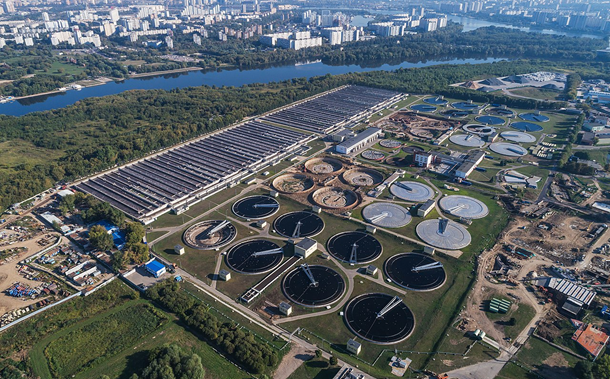Evaluating the Role of Polymer Concrete in Enhancing Long-Term Performance and Reducing Early Age Cracking
Downloads
This study evaluates the potential of polymer concrete (PC) to reduce early-age cracking and improve long-term durability compared to traditional Portland cement concrete (PCC). It investigates the effect of varying polymer-to-aggregate ratios (5%-20%) on mechanical properties, early-age cracking, and durability under extreme environmental conditions, including freeze-thaw cycles, high temperatures, and chemical exposure. Experimental tests were conducted to measure compressive strength, flexural strength, fracture toughness, and durability of PC under accelerated aging conditions. The methodology involved mixing epoxy resin with selected aggregates to create different PC formulations. Tests such as restrained shrinkage, freeze-thaw, sulfuric acid immersion, and high-temperature exposure simulated real-world conditions. Results showed that PC with 15%-20% polymer content reduced early-age cracking by up to 56%, increased compressive strength by 28%, and exhibited superior resistance to freeze-thaw cycles and chemical degradation compared to PCC. The main contribution of this study is a comprehensive comparison between PC and PCC under accelerated aging, providing insights into the optimal polymer-to-aggregate ratio for maximizing performance and durability. These findings underscore the potential of polymer concrete as a durable, long-lasting material for high-performance infrastructure, especially in harsh environments. The research suggests that PC could extend the service life of concrete structures, lower maintenance costs, and offer a more sustainable alternative to traditional concrete.
Downloads
[1] Bedi, R., Chandra, R., & Singh, S. P. (2013). Mechanical properties of polymer concrete. Journal of Composites, 2013(1), 948745. doi:10.1155/2013/948745.
[2] Zheng, Z., Shen, W., Li, S., Li, C., Yin, P., Guan, M., & Ha, J. (2025). Mechanical properties and Freeze-Thaw durability of concrete modified with microencapsulated phase change materials. Scientific Reports, 15(1), 12345. doi:10.1038/s41598-025-11371-6.
[3] Shen, D. (2023). Cracking Control on Early-Age Concrete Through Internal Curing. Cracking Control on Early-Age Concrete Through Internal Curing. Springer, Singapore. doi:10.1007/978-981-19-8398-6.
[4] Göbel, L., Pichler, B., & Osburg, A. (2018, April). Experimental analysis and micromechanics-based prediction of the elastic and creep properties of polymer-modified concrete at early ages. In International Congress on Polymers in Concrete, 37-47. doi:10.1007/978-3-319-78175-4_4.
[5] Alshammari, T. O., Pilakoutas, K., & Guadagnini, M. (2023). Effect of Curing Methods on Plastic Shrinkage Cracking. Construction Materials, 3(2), 244–258. doi:10.3390/constrmater3020016.
[6] Zhang, X., Du, M., Fang, H., Shi, M., Zhang, C., & Wang, F. (2021). Polymer-modified cement mortars: Their enhanced properties, applications, prospects, and challenges. Construction and Building Materials, 299, 124290. doi:10.1016/j.conbuildmat.2021.124290.
[7] Odeh, A., Taha, O. S., Almakhadmeh, M. N., Al-Rababah, A., & Al-Fakih, A. (2025). Comprehensive review of polymer-based concrete: properties, sustainability, and challenges. Environmental Science and Pollution Research, 1-30. doi:10.1007/s11356-025-36901-7.
[8] Li, X., Gu, J., Xu, Y., Li, S., & Zhang, R. (2025). Review of Component Materials and Diverse Applications of Polymer Concrete. Materials, 18(12), 2745. doi:10.3390/ma18122745.
[9] Salami, B. A., Bahraq, A. A., ul Haq, M. M., Ojelade, O. A., Taiwo, R., Wahab, S., ... & Ibrahim, M. (2024). Polymer-enhanced concrete: A comprehensive review of innovations and pathways for resilient and sustainable materials. Next Materials, 4, 100225. doi:10.1016/j.nxmate.2024.100225.
[10] Mostofinejad, D., Bahmani, H., Khorshidifar, A., & Afsharpour, R. (2024). Enhancing concrete durability with polymer impregnation: A comparative study of corrosion and freeze-thaw resistance. Developments in the Built Environment, 18, 100414. doi:10.1016/j.dibe.2024.100414.
[11] Qu, Z., Zhang, Y., Liu, Z., Si, R., & Wu, J. (2024). A review on early-age cracking of concrete: Causes and control. Case Studies in Construction Materials, 21, e03848. doi:10.1016/j.cscm.2024.e03848.
[12] Shrestha, K., Shrestha, P. P., & Batista, J. (2024). Evaluating Life-Cycle Unit Costs of Traditional Cement Concrete and New Polymer Concrete Manholes in Wastewater Systems. Buildings, 14(9), 2835. doi:10.3390/buildings14092835.
[13] ASTM C39/C39M-21. (2023). Standard Test Method for Compressive Strength of Cylindrical Concrete Specimens. ASTM International, Pennsylvania, United States. doi:10.1520/C0039_C0039M-21.
[14] ASTM C78/C78M-22. (2022). Standard Test Method for Flexural Strength of Concrete (Using Simple Beam With Center-Point Loading). ASTM International, Pennsylvania, United States. doi:10.1520/C0078_C0078M-22.
[15] Liu, Y., Zheng, J., Zhang, X., Li, K., Du, Y., Yu, G., ... & Zhang, Y. (2021). Recent advances on graphene microstructure engineering for propellant‐related applications. Journal of Applied Polymer Science, 138(21), 50474. doi:10.1002/app.50474.
[16] Safiuddin, M., Kaish, A. B. M. A., Woon, C. O., & Raman, S. N. (2018). Early-age cracking in concrete: Causes, consequences, remedialmeasures, and recommendations. Applied Sciences (Switzerland), 8(10), 1730. doi:10.3390/app8101730.
[17] Tripathi, B. (2024). Effects of Polymers on Cement Hydration and Properties of Concrete: A Review. ACS Omega, 9(2), 2014–2021. doi:10.1021/acsomega.3c05914.
[18] Ahmad, O. A., Al Kassasbeh, A. M., & Al Rawashdeh, M. A. (2021). Fabrication of Polymer Concrete of Light Weight and High Performance. GEOMATE Journal, 20(77), 116-122. doi:10.21660/2020.77.44329.
[19] Gu, J., Xing, J., Che, J., & Chin, S. C. (2025). Mechanical properties and stress-strain relationship of early strength polymer-modified concrete at different ages. Physics and Chemistry of the Earth, Parts A/B/C, 139, 103895. doi:10.1016/j.pce.2025.103895.
[20] Alsaadi, M., Sebaey, T. A., Hinchy, E. P., McCarthy, C. T., de Lima, T. A. d. M., Portela, A., & Devine, D. M. (2025). Viscoelastic, Shape Memory, and Fracture Characteristics of 3D-Printed Photosensitive Epoxy-Based Resin Under the Effect of Hydrothermal Ageing. Journal of Manufacturing and Materials Processing, 9(2), 46. doi:10.3390/jmmp9020046.
[21] Ferdous, W., Manalo, A., Wong, H. S., Abousnina, R., AlAjarmeh, O. S., Zhuge, Y., & Schubel, P. (2020). Optimal design for epoxy polymer concrete based on mechanical properties and durability aspects. Construction and Building Materials, 232, 117229. doi:10.1016/j.conbuildmat.2019.117229.
[22] Khaleel, Y. U., Qubad, S. D., Mohammed, A. S., & Faraj, R. H. (2024). Reinventing concrete: a comprehensive review of mechanical strength with recycled plastic waste integration. Journal of Building Pathology and Rehabilitation, 9(2), 111. doi:10.1007/s41024-024-00465-9.
[23] Mahmoud, A. A. M., Shehab, M. S. H., & El-Dieb, A. S. (2010). Concrete mixtures incorporating synthesized sulfonated acetophenone-formaldehyde resin as superplasticizer. Cement and Concrete Composites, 32(5), 392–397. doi:10.1016/j.cemconcomp.2010.02.005.
[24] Fowler, D. W. (1999). Polymers in concrete: a vision for the 21st century. Cement and concrete composites, 21(5-6), 449-452. doi:10.1016/S0958-9465(99)00032-3.
[25] Jafari, K., Heidarnezhad, F., Moammer, O., & Jarrah, M. (2021). Experimental investigation on freeze-thaw durability of polymer concrete. Frontiers of Structural and Civil Engineering, 15(4), 1038–1046. doi:10.1007/s11709-021-0748-2.
[26] Nursamhuda, W., Susanti, L., & Wijaya, M. N. (2025). Sustainability and Environmental Impact of Polymer Concrete with Styrene Monomer and GGBFS In Structural Applications: A Literature Review. Rekayasa Sipil, 19(1), 97–109. doi:10.21776/ub.rekayasasipil.2025.019.01.12.
[27] Yuan, Y., & Wan, Z. L. (2002). Prediction of cracking within early-age concrete due to thermal, drying and creep behavior. Cement and concrete research, 32(7), 1053-1059. doi:10.1016/S0008-8846(02)00743-3.
[28] Abbas, M. M., & Muntean, R. (2025). The Effectiveness of Different Additives on Concrete’s Freeze–Thaw Durability: A Review. Materials, 18(5), 978. doi:10.3390/ma18050978.
[29] Atílio Fritz Fidel Rocco, J., Francisco Boschi Gonçalves, R., & Galizia Domingues, M. (2023). Physicochemical Behavior of Concretes Admixed with Water-Based Polymers (PMC: Polymer-Modified Concrete). Reinforced Concrete Structures - Innovations in Materials, Design and Analysis, IntechOpen, London, United Kingdom. doi:10.5772/intechopen.1001363.
[30] Idrees, M., Akbar, A., Saeed, F., Saleem, H., Hussian, T., & Vatin, N. I. (2022). Improvement in Durability and Mechanical Performance of Concrete Exposed to Aggressive Environments by Using Polymer. Materials, 15(11), 3751. doi:10.3390/ma15113751.
[31] Junaid, M. F., Rehman, Z. Ur, Kuruc, M., Medveď, I., Bačinskas, D., Čurpek, J., Čekon, M., Ijaz, N., & Ansari, W. S. (2022). Lightweight concrete from a perspective of sustainable reuse of waste byproducts. Construction and Building Materials, 319, 126061. doi:10.1016/j.conbuildmat.2021.126061.
- Authors retain all copyrights. It is noticeable that authors will not be forced to sign any copyright transfer agreements.
- This work (including HTML and PDF Files) is licensed under a Creative Commons Attribution 4.0 International License.![]()














